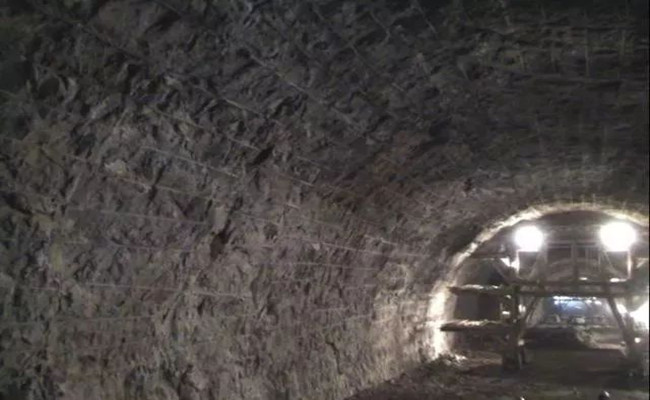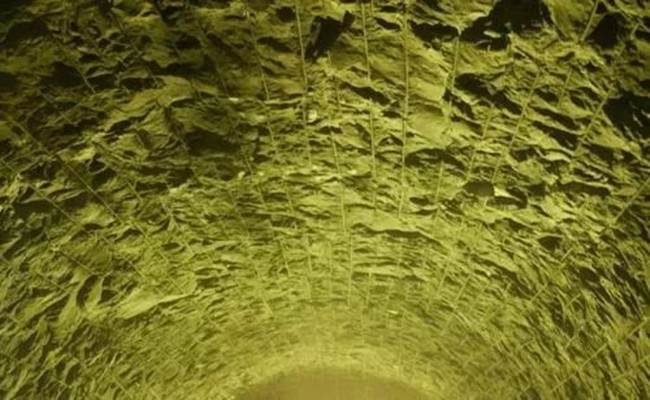Application of Smooth Blasting Technology in Tunneling of Coal Mine
New technology: O2 rock demolition system
Link:
Related products Link:
Smooth blasting technology is very important for the maintenance of the roof of coal mine tunnels. It basically refers to the rational arrangement of holes, scientific charging, and effective setting of the detonation sequence to form a regular outline after blasting the tunnel to reduce the workload of tunnel support. , Reduce the damage of surrounding rock, improve the stability of the roadway, and ensure the purpose of safe production. At present, smooth blasting technology has been widely used in the process of tunnel driving and tunnel engineering construction, and continuous innovation in practice. Smooth blasting technology can not only ensure the quality of the roadway engineering, improve the construction progress of the roadway, but also effectively reduce the support workload and reduce production costs. The more important smooth blasting technology can greatly improve the safety performance of the roadway and extend the roadway. Years of service.
1 Overview of smooth blasting technology
1.1 Principle of smooth blasting
The principle of smooth blasting is mainly to use the air column to propagate the radial tensile stress after the explosive explodes through the surrounding holes, so that the cracks are formed between the blast holes and the light blast effect is achieved.
Basic requirements: The surrounding holes of the roadway should be arranged along the excavation contour, and the angle with the excavation contour should meet the requirements of the excavation section. All the surrounding holes should be arranged in parallel on an excavation plane; the charge structure should be large Aperture-small-volume explosive mode, here the blast hole adopts radial-axial uncoupling charging method; the blast hole detonation sequence needs to be set reasonably according to the blast hole layout.
1.2 Features of smooth blasting
The application of smooth blasting technology can realize roadway shaping and regularity, the excavation section is highly consistent with the designed excavation contour, and the project quality is significantly improved. In areas with good surrounding rock stability, the half-hole hole formation effect is particularly obvious, which can maintain the stability of the surrounding rock, and almost no support is needed around the roadway to meet production requirements; in areas with poor surrounding rock stability, smooth blasting is more effective. Poor, but it can keep the surrounding rock from being damaged by the blasting vibration, effectively avoid the impact damage of blasting to the surrounding rock, and ensure the overall strength of the surrounding rock. The relaxation zone of the surrounding rock is 1/3 of that of conventional blasting, and the overall stability of the surrounding rock Significantly increased.
1) The advantages of smooth blasting: reduce the charge of the side hole (or top plate), reduce the cost; reduce the over-excavation and under-excavation of the project. The application of smooth blasting can greatly reduce the workload of over-excavation and under-excavation, and effectively improve the quality and progress of construction projects; improve the safety factor of operation, smooth blasting can reduce the vibration of blasting on surrounding ore and rock, and effectively reduce the generation of large areas of pumice It greatly improves the safety factor of the job site; reduces the amount of pumice handled by the side siding (or roof), and smooth blasting can reduce the top slab pumice, reducing the work intensity and labor of the underground production operators; reduce the side siding (or roof) ) To reduce the impact of support on the mining cycle. Smooth blasting can significantly increase the speed of excavation while reducing the workload of blasting and support. The broken surrounding rock area can effectively reduce the amount of concrete lining pouring.
2) Disadvantages of smooth blasting: multiple construction of blast holes, 4 to 5 more blast holes in one area, compared with the above advantages, the shortcomings of more holes can be ignored; light blasting in areas with developed joints and structures The effect may not be obvious.

2 Application examples of smooth blasting in coal mines
2.1 Overview of application conditions
A mine subordinate to Lu'an Mining Company has geological conditions classified as: Ⅲ-ⅢcⅡdⅢc. The main geological structures exposed include faults, collapsed columns, and folds. The elevation is 850-680m, and the average thickness of the loose layer in the minefield is 399.89m. The surrounding rock of smooth blasting application roadway site is mainly composed of sandy mudstone, mudstone, carbonaceous mudstone and coal rock. The lithology is soft and fragile, the ground pressure is large, the rock hardness coefficient is f=4~8, and the tunneling net section is 5.5 square meters.
2.2 Technical parameters of smooth blasting
The roadway is excavated manually using YT-28 air-leg rock drill. The hole diameter is Φ40~Φ42mm, and the hole diameter of the cut hole, auxiliary control and peripheral holes are all Φ40~Φ42 mm.
2.2.1 Cut holes, auxiliary eyes
The cutting method is a combined cutting method, which adopts a combination of wedge cutting and straight-hole cutting, of which 4 straight-holes are parallel to the direction of roadway excavation, and the angle between 4 oblique holes and the working surface is 75°~86 °, the blast hole spacing is determined according to the working surface hardness coefficient f=8~12 and the blast hole diameter, and the distance between the straight cut hole and the oblique cut hole is 15cm, and the oblique hole spacing is 0.4~0.45m. The auxiliary eye distance is 0.5~0.7m, and the distance between the two circles is 0.7~0.9m. To ensure the blasting footage, the control cut eye is 20cm deeper than the auxiliary eye.
Cut hole No. 2 rock emulsion explosive, the diameter of the charge is 38 mm, the diameter of the charge is not much different from the diameter of the blast hole, the charge work is relatively smooth, and the diameter of the blast hole and the 38 mm charge basically realize the coupling charge.
2.2.2 Peripheral eye spacing
The core technical parameters of smooth blasting are peripheral hole pattern, charging structure, and blocking method. According to the nature of the surrounding rock and the diameter of the blasthole, the distance between the peripheral holes is 0.45~0.6mm, the peripheral holes are inserted at a slight angle, and the hole bottom is 0.1~0.2m from the roadway contour. The hole distance between the two sides and the large span of the dome is set to be 0.6m, and the hole distance in the arch bottom area on both sides of the small curvature radius is set to 0.4m to ensure the controlled blasting surface. Based on the site conditions, the depth of the peripheral holes in this test is 1.8m. Φ32mm×200mm emulsion explosives are used, with spaced charges, the orifice is blocked by 30cm, and the air column is 60cm from the orifice to the explosive.
2.2.3 Application effect
1) After blasting, the contour of the roadway is regular and neat, and the surrounding rock is basically free of spalling, indicating that the smooth blasting application blasting vibration effect is significantly reduced.
2) The amount of over-excavation and under-excavation in the tunneling section is significantly reduced. The average over-excavation amount is less than 50mm, and the maximum over-excavation amount is less than 100mm.
3) The tunneling efficiency has been significantly improved, and the tunneling speed has been increased from the original 90m/month to 130m/month.
4) The monthly support amount is small, which greatly reduces the support cost and shortens the time and labor of support.
3 Conclusion
1) The key to smooth blasting technology lies in the selection of the blast hole spacing of the peripheral holes, the design of the charge quantity, the requirements of the charge blocking method, and the setting of the blast hole initiation sequence. Among them, the surrounding eye charge and the charge method are particularly critical. On the basis of strict control, it is necessary to adjust the effect according to the change of rock hardness.
2) The test shows that there are more holes in the middle of the holes around the broken area, and the smooth blasting effect is better after blasting. The holes are mostly half-holes and the rock walls are flat.
3) Practice has shown that the smooth blasting technology has significantly improved the blasting effect and can achieve the integrity of the roadway section profile. After blasting, the surrounding half hole of the roadway is obvious, and the damage of the surrounding rock by the blasting vibration is significantly reduced, which greatly maintains the overall stability of the surrounding rock It also effectively avoids the problem of over-excavation and under-excavation of roadways, effectively reduces support costs, and improves operation efficiency.





